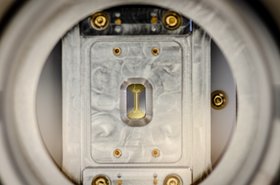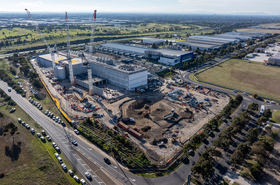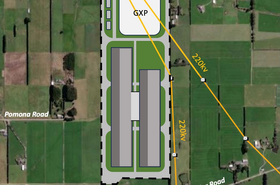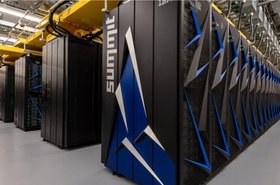Quantum computers will not need to outperform supercomputers to be considered meaningful.
Forget "quantum advantage," the moment when quantum computers will outperform today’s classical systems, or achieve “quantum supremacy,” when quantum computers could solve a problem that no classical computer could do.
Near-term quantum computing will always be hybrid, even if it's fault tolerant. Owning the transitionary hybrid classical-quantum period of the next 20 years or so is the practical, useful thing to do.
More valuable – and supplying practical benefits sooner – is “quantum utility,” when a quantum system can outperform classical processors of comparable size, weight, and power in similar environments.
A newly released paper, Quantum utility – definition and assessment of a practical quantum advantage, challenges the importance of quantum advantage and supremacy with quantum utility, or usefulness.
Data center applications
Most quantum computers require careful temperature control and very large housing in mainframes, just like the classical computers of the 1960s. Over time, advancements in technology allowed engineers to shrink classical computers down to desktops, laptops, tablets, phones, watches, and smaller ones, increasing usefulness with each step.
However, utility will come much faster to quantum systems that overcome the temperature challenge and easily integrate with supercomputers and inside data centers.
Room-temperature quantum devices will allow for early integrations with classical systems. Rack-mounted form factors are available today in prototypes that can work right alongside mainframes in data centers. These quantum “accelerators” will be able to augment classical computations with quantum power in the future.
At some point, massive parallelization of these quantum systems will enable higher performance compared to classical alone. Quantum machine learning and model training cycles can be distributed not one-by-one but in batches across different nodes at the same time, then placed into the training computation.
Large-scale deployment of interconnected clusters of room-temp quantum accelerators could eventually unlock never-before-seen advances in molecular dynamics, industrial catalysts, batteries, drug discovery, and more.
Having quantum computers working in racks right next to supercomputers would provide vast improvements in utility, parallelization, latency, and privacy.
All operations can be completed on-site, eliminating the need to send sensitive information through the cloud. With parallel structures of small quantum devices running calculations, data centers can keep their data in their centers.
Along this avenue, and with a defined framework, one can see where the future of quantum utility lies and allow organizations to quantitatively measure its application readiness.
The five application readiness levels
Fortunately, there is an easy-to-follow path of Application Readiness Levels (ARLs) to plan for quantum utility in multiple quantum applications from the fields of quantum chemistry, quantum simulation, quantum machine learning, and data analysis:
- Problem statement – Formulate a concept/idea for a quantum or classical/quantum application.
- Useful proof of concept – Prove the idea is favorable to a similarly idealized classical algorithm.
- Proof of scalability – Extrapolate to expose a quantum device that is faster, more accurate, or demands less energy compared to a classical competitor of similar size, weight, and cost.
- Utility in simulation – Confirm, by large-scale, noise-free, or noisy quantum application simulation, the device’s functionality and requirements.
- Quantum utility – Confirm a useful, practically relevant application on real quantum hardware.
The bottom line in usefulness
For companies to invest in quantum technology or solutions, they must see a roadmap of how and when they will experience value. The ARL framework can empower users to discover their early quantum utility opportunities while also helping them to plan how to leverage more powerful quantum systems in the years ahead.
Expect GPU-sized quantum computers with 50 and more qubits within the next few years and, at some point, truly ubiquitous quantum computing with devices small enough to sit beside your laptop.
Given that small-form quantum computers can exist with and work alongside mainframes and classical computers, and be leveraged as needed to solve complex problems, achieving quantum utility stands to foster collaboration and accelerate innovation and adoption of quantum computing across industries.
Nils Herrmann also contributed to this opinion piece. Nils is a Quantum Applications Developer with Quantum Brilliance. A theoretical chemist and quantum physicist, he leads application-oriented benchmarking and quantum utility research at Quantum Brilliance.








